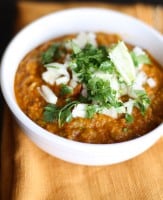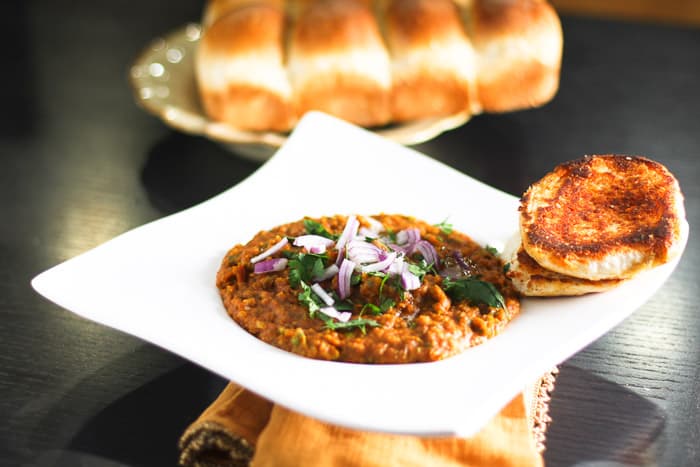
“I think of it as the antidote to fast food; it’s the clear alternative to the king, the clown and the colonel. It’s faster, and chances are it’s healthier than something at a traditional fast food restaurant. I would much rather give my money to a neighbor or an individual than to a gigantic corporation that owns half the world. Maybe it’s naïve of me, but I prefer food made by an identifiable human that’s actually cooking.” – Chef, author and TV personality Anthony Bourdain
Pav – the bread. Bhaji – the vegetables. Pav Bhaji – Popular Mumbai street food. Mumbai – The Business and Financial Capita of India & the city that never sleeps. There are a couple of interesting legends that talk about how the first Pav bhaji was made. There is one that speaks about pav bhaji being invented as midnight dinner by vendors. They threw in together the leftover vegetables from the day and mashed them up to make them indistinguishable. They then spiced it up further and served with a pav for workers coming off the night shift from factories. 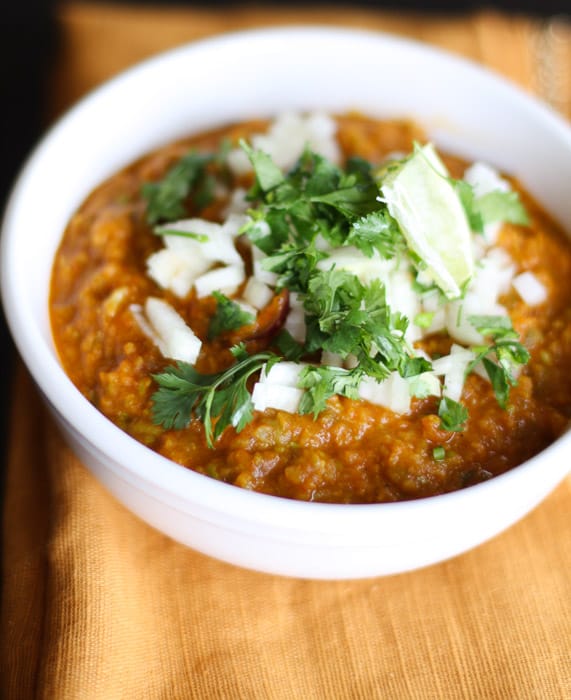 The legends about the origin of the pav are also interesting. And they all revolve around the word Pav. One of the stories says that it is called pav because you always got them in fours and since while eating people broke off one part to eat. A Quarter is a ‘Pav’ in the local language. The other story is that Pav is a derivate of the Portugese word Pao for bread.
The legends about the origin of the pav are also interesting. And they all revolve around the word Pav. One of the stories says that it is called pav because you always got them in fours and since while eating people broke off one part to eat. A Quarter is a ‘Pav’ in the local language. The other story is that Pav is a derivate of the Portugese word Pao for bread.
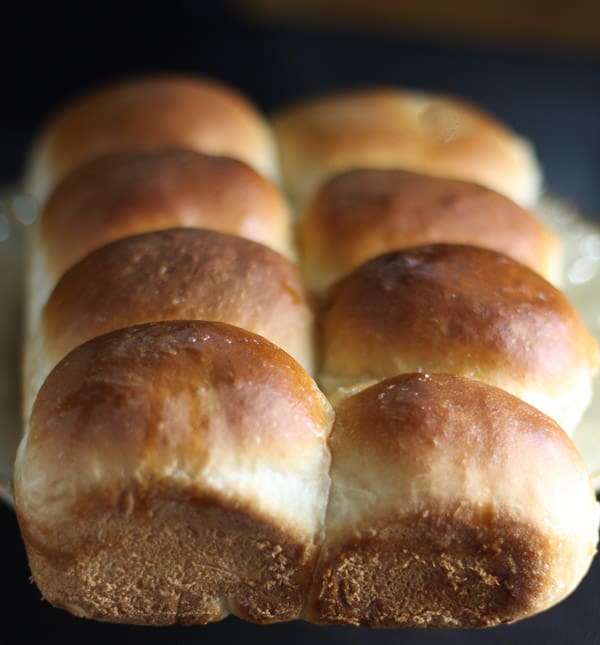
The making of the Pav Bhaji at our home is a spiritual process. The Husband was born in Mumbai after all. He was raised in many other cities, but he remains a true Mumbaikar. There can be no shortcuts (ironical considering the legends say it was a short cut mishmash). The Pav has to be just right. The bhaji has to be the right balance between salty and tangy and has to have just the right amount of delicious butter. If you are on a diet, this is one dish you may never try. Each bite is sinful, each one leaves you craving for more. 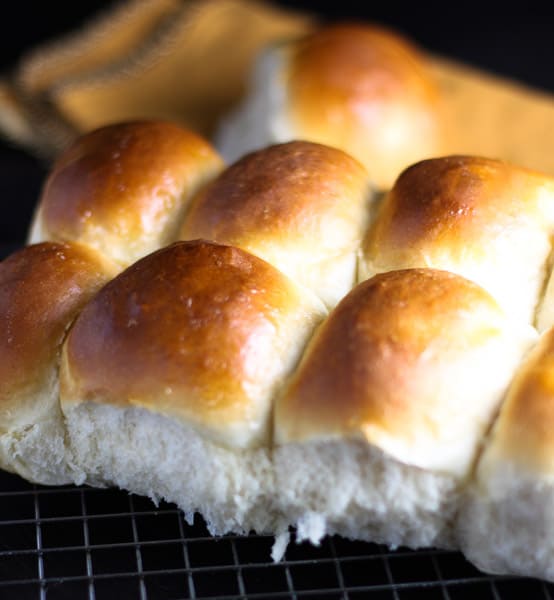 And do not ever eat it without the raw onions and lemon and cilantro on top. It’s just not done! The recipe looks lengthy, but you can plan to do it over a couple of days. Plan to prep and steam the veggies, make the ginger garlic paste on one day and then make the pav on the day you plan to serve the pav bhaji. While the dough for pav is resting you can put together the bhaji and then serve it with the pav when they are done. This pav is also being sent to YEASTSPOTTING
And do not ever eat it without the raw onions and lemon and cilantro on top. It’s just not done! The recipe looks lengthy, but you can plan to do it over a couple of days. Plan to prep and steam the veggies, make the ginger garlic paste on one day and then make the pav on the day you plan to serve the pav bhaji. While the dough for pav is resting you can put together the bhaji and then serve it with the pav when they are done. This pav is also being sent to YEASTSPOTTINGPav Bhaji – Mumbai Street Food
For the Pav
- 3 1/2 C All Purpose flour
- 1 Tbs Vital Gluten you can alternately use bread flour or simply skip using vital gluten if you don't have it
- 3 tsp Active Dry Yeast
- 1 tsp salt
- 1 tbs sugar
- 1 1/2 C Whole Milk
- 2 Tbs Butter melted
For the egg wash
- 1 egg and 1 tsp water beaten together
- or if you don't use eggs some whole milk to brush on top
For the Bhaji
- 2 C peeled and Diced potatoes
- 1 C green peas
- 1/2 C Carrots
- 1 C Cauliflower Florets
- 1/2 Bell pepper
- 1 c Chopped tomatoes
- 1/4 C chopped onions to sprinkle on top
- 1/2 C cilantro chopped 1/4 C for the topping and 1/4 C for adding into the bhaji while cooking
- 1 lemon cut into wedges
- 2 - 3 tsp red chilli powder depending on how hot you want it
- 2 tsp ginger and garlic paste
- 1/2 tsp turmeric
- 3-4 tsp Pav Bhaji Masala Home made or store bought
- 3 Tbs butter
- Salt to taste
- 1 tsp green chilli minced only if you like it extra hot.. this is optional
- 1/2 C water
Spl Equipment - Potato Masher
Make the Pav
Put the flour, yeast, vital gluten, salt and sugar in the bowl of your stand mixer. Attach the paddle to the mixer and stir for a few seconds. Heat up the milk and butter together until luke warm ( about 100 – 110F)
Gradually pour the milk and butter mix into the bowl while keeping the mixing speed at low.
Switch to a dough hook and knead until smooth and almost shiny. You may mix and knead in a food processor or by hand as well.
Place the dough in a well oiled bowl. Cover with plastic wrap. Let rise in a warm place until double in size. Depending on weather it can take anywhere between 45 minutes to an hour or more. The best is to keep an eye on the dough and measure the volume.
Once the dough is double in volume, take it out of the bowl, punch it down to release the air.
Line a baking sheet with parchment paper and set to work on the shaping of the pav.
Pinch off the dough and form into round balls. Try and make equal size balls. Place on the baking sheet and place them close to each other so that they are touching each other.
Cover with a kitchen towel, and leave them undisturbed for another 30 minutes.
Heat Oven to 420*F.
When rolls have risen, make a glaze by beating together the egg and water. Brush the rolls with the egg wash. Alternately brush with some milk.
Bake for about 15 minutes, until risen and browned on top. Cool completely before serving as pav.
To Serve the Pav
To prepare the pav, slice the pav in half like a hamburger bun. Heat a pan and put a pat of butter on it, then put the pav cut side down and heat until slightly crisp. You may also make a masala pav by adding some Pav bhaji masala to the butter and then heat the pav. Serve with the bhaji.
Make the Bhaji
Steam cook the potatoes, cauliflower, peas, bell pepper and carrots until soft.
Take 2Tbs butter in a wide pan and heat it it. Put the ginger garlic paste and cook it until fragrant.
Now add 1 tsp chilli powder, the turmeric and saute. Immediately add in the tomatoes. Stir to coat and let the tomatoes cook completely.
Use the masher directly in the pan to completely mash up the tomatoes.
Now add the bell pepper, peas and cauliflower and mash them into the tomato mix.
Then add in the potatoes and 1/4 C water and mix it all together. Mash it all up until the mix looks smooth.
Add the rest of the red chilli powder, green chilli (if using) the pav-bhaji masala,salt and 1/4 c cilantro.
Mix again and mash. Keep adding a little water to ensure the bhaji does not stick to the pan. Cook for about 3- 4minutes on medium heat to ensure the spices get cooked and mixed in.
Ensure you don't add too much water, else the consistency will be runny.
Serve the bhaji
Put some bhaji in a plate or bowl, top it with some butter, chopped onions, cilantro and small wedge of lemon. Serve the prepared pav along.
 The legends about the origin of the pav are also interesting. And they all revolve around the word Pav. One of the stories says that it is called pav because you always got them in fours and since while eating people broke off one part to eat. A Quarter is a ‘Pav’ in the local language. The other story is that Pav is a derivate of the Portugese word Pao for bread.
The legends about the origin of the pav are also interesting. And they all revolve around the word Pav. One of the stories says that it is called pav because you always got them in fours and since while eating people broke off one part to eat. A Quarter is a ‘Pav’ in the local language. The other story is that Pav is a derivate of the Portugese word Pao for bread.
 And do not ever eat it without the raw onions and lemon and cilantro on top. It’s just not done! The recipe looks lengthy, but you can plan to do it over a couple of days. Plan to prep and steam the veggies, make the ginger garlic paste on one day and then make the pav on the day you plan to serve the pav bhaji. While the dough for pav is resting you can put together the bhaji and then serve it with the pav when they are done. This pav is also being sent to YEASTSPOTTING
And do not ever eat it without the raw onions and lemon and cilantro on top. It’s just not done! The recipe looks lengthy, but you can plan to do it over a couple of days. Plan to prep and steam the veggies, make the ginger garlic paste on one day and then make the pav on the day you plan to serve the pav bhaji. While the dough for pav is resting you can put together the bhaji and then serve it with the pav when they are done. This pav is also being sent to YEASTSPOTTING